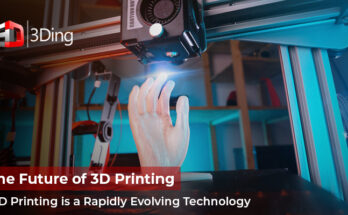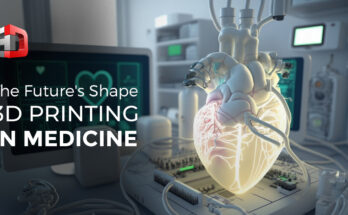As of now, 3D printing is playing a vital role in the construction sector. For example; 3D printed buildings and 3D printer homes are some of the recent developments in the construction sector.
The 3D printing process can increase the overall construction process and timeline, use waste and recycled building material, and decrease carbon footprint.
Do you want to know how 3D printing is revolutionizing the construction industry? If yes, then this blog will be fruitful for you.
Here we have explained everything about the role of 3D printing in the construction industry. We have come up with this piece of work from our years of experience as the providers of 3D printing services in Bangalore, Chennai, and Hyderabad.
How is 3D printing used in a construction project?
When it comes to the construction sector, 3D construction printer is used. This printer is designed mainly for this industry. The 3D construction printer can be made use of 3D concrete printing.
The concrete which is a 3D printer can be used on construction sites as a building block. At the same time, this technology is also useful for designing and printing a 3D-printed home.
The 3D printed construction process begins with designing a digital structure model with the help of CAD software and a 3D scanner. After this, the printer understands the design and applies consecutive layers of materials to create the structure. The materials include a powder, liquid, or sheet.
3D printing technologies in Construction
Here are some of the technologies in 3D printing for additive manufacturing applications in the construction sector:
3D Printing with Sand
The process is similar to industrial 3D printing techniques like Jet Fusion or SLS. An Italian architect Enrico Dini was the one who used this for the first time to test with his 3D printer in a D shape. The printer applies a sand powder coating prior to hardening the shape of the construction using a binder.
Robotic Arm Extruders
This is one of the prominent 3D printing technologies used for creating XL structures. It is comparable to how the FDM desktop 3D printer functions. The arrangement of rails is done in such a way that the robotic arm could move layer by layer and take out the concrete material coming from the nozzle.
Pros of 3D Printing Technology in the Construction Sector
1. Reduces Construction Price
The construction industry is one of the labor-intensive and capital-intensive economic sectors. Moreover, it avoids the need for high labor requirements, which in turn reduces the construction cost.
2. Fast Delivery
When it comes to the construction process, there are several factors, which delay the process. 3D printing doesn’t depend on labor and other related things, so it can develop quickly without exhaustion.
3. Enhanced Flexibility in Design
3D printing helps in creating complicated designs. A construction 3D printer makes use of computer programs, which can be used to design complicated and challenging designs.
4. Reduce Human Errors
The 3D printing process relies on pre-programmed automated operation without any human interference. This, in turn, reduces human errors.
5. Helps in Green Building Construction
Green buildings are becoming the most trending in the construction sector. Many companies are adopting green constructions due to the increased awareness of climate change.
In this, 3D printers play a vital role by using waste and recycled construction materials for creating 3D printed structures.
Final Words
As of now, the construction industry is all set for innovation as the traditional construction process is costly, time-consuming, and harmful to the environment.
If you need information about 3D printing or want to use the 3D printing technology, feel free to reach us. We are one of the best service providers of 3D printing in Chennai, Bangalore, and Hyderabad.




